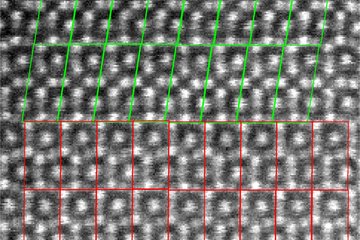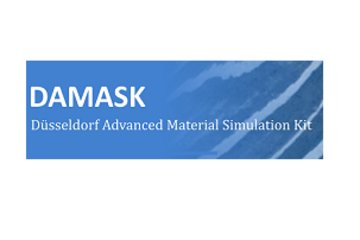All genres
41.
Journal Article
Ions and solvation at biointerfaces. Biointerphases 11 (1), 018801 (2016)
42.
Journal Article
Raman Spectroscopy of Mackinawite FeS in Anodic Iron Sulfide Corrosion Products. Journal of the Electrochemical Society 163 (6), pp. C333 - C338 (2016)
43.
Journal Article
Mechanism of the potential-triggered surface transformation of germanium in acidic medium studied by ATR-IR spectroscopy. Physical Chemistry Chemical Physics 18, pp. 25100 - 25109 (2016)
44.
Journal Article
Electrochemically triggered nucleation and growth of zinc phosphate on aluminium-silicon-coated steel. Electrochimica Acta 182, pp. 1132 - 1139 (2015)
45.
Journal Article
Surface Functionalization of Oxide-Covered Zinc and Iron with Phosphonated Phenylethynyl Phenothiazine. Langmuir 31 (26), pp. 7306 - 7316 (2015)
46.
Journal Article
A reevaluation of the correlation between the synthesis parameters and structure and properties of nitrogen-doped carbon nanotubes. Journal of Energy Chemistry 24 (4), pp. 407 - 415 (2015)
47.
Journal Article
Electrochemical characterization of direct electron uptake in electrical microbially influenced corrosion of iron by the lithoautotrophic SRB Desulfopila corrodens strain IS4. Electrochimica Acta 167, pp. 321 - 329 (2015)
48.
Journal Article
Zinc oxide as a defect-dominated material in thin films for photovoltaic applications - experimental determination of defect levels, quantification of composition, and construction of band diagram. Physical Chemistry Chemical Physics 17 (15), pp. 10004 - 10013 (2015)
49.
Journal Article
Whispering gallery modes in intrinsic TiO2 microspheres coupling to the defect-related photoluminescence after visible excitation. Physica Status Solidi (RRL) - Rapid Research Letters 9, pp. 241 - 244 (2015)
50.
Journal Article
Modellexperimente für elektrochemische Energieumwandlung und Korrosion. Bunsen-Magazin 17 (1), pp. 3 - 9 (2015)
51.
Journal Article
Metallic, oxygen-containing reaction products after polarisation of iron in H2S saturated saline solutions. Corrosion Science 98, pp. 725 - 736 (2015)
52.
Journal Article
Solvent-starved conditions in confinement cause chemical oscillations excited by passage of a cathodic delamination front. Chemical Communications 51 (89), pp. 16041 - 16044 (2015)
53.
Journal Article
Towards monomaterial p-n junctions: single-step fabrication of tin oxide films and their non-destructive characterisation by angle-dependent X-ray photoelectron spectroscopy. Applied Physics Letters 107 (23), 231601 (2015)
54.
Journal Article
A new look at oxide formation at the copper/electrolyte interface by in situ spectroscopies. Physical Chemistry Chemical Physics 17, pp. 31670 - 31679 (2015)
55.
Journal Article
Sequential growth of zinc oxide nanorod arrays at room temperature via a corrosion process: Application in visible light photocatalysis. ACS Applied Materials & Interfaces 6 (21), pp. 18728 - 18734 (2014)
56.
Journal Article
Synthesis of ultrathin poly(methyl methacrylate) model coatings bound via organosilanes to zinc and investigation of their delamination kinetics. ACS Applied Materials & Interfaces 6 (20), pp. 18112 - 18121 (2014)
57.
Journal Article
Effect of the primary heat treatment on the bond formation in cold welding of aluminum and steel by cold forging. Journal of Materials Processing Technology 214 (10), pp. 2040 - 2048 (2014)
58.
Journal Article
A microstructural study of the structure of plasma electrolytically oxidized titanium foils. Applied Physics A 116, pp. 2039 - 2044 (2014)
59.
Journal Article
Electrochemical reductive desorption of alkyl self-assembled monolayers studied in situ by spectroscopic ellipsometry: Evidence for formation of a low refractive index region after desorption. Physical Chemistry Chemical Physics 16 (32), pp. 17081 - 17090 (2014)
60.
Journal Article
Correlation between morphology and local thermal properties of iron (II) phthalocyanine thin layers. Journal of Physics D: Applied Physics 47 (33), 335304 (2014)











